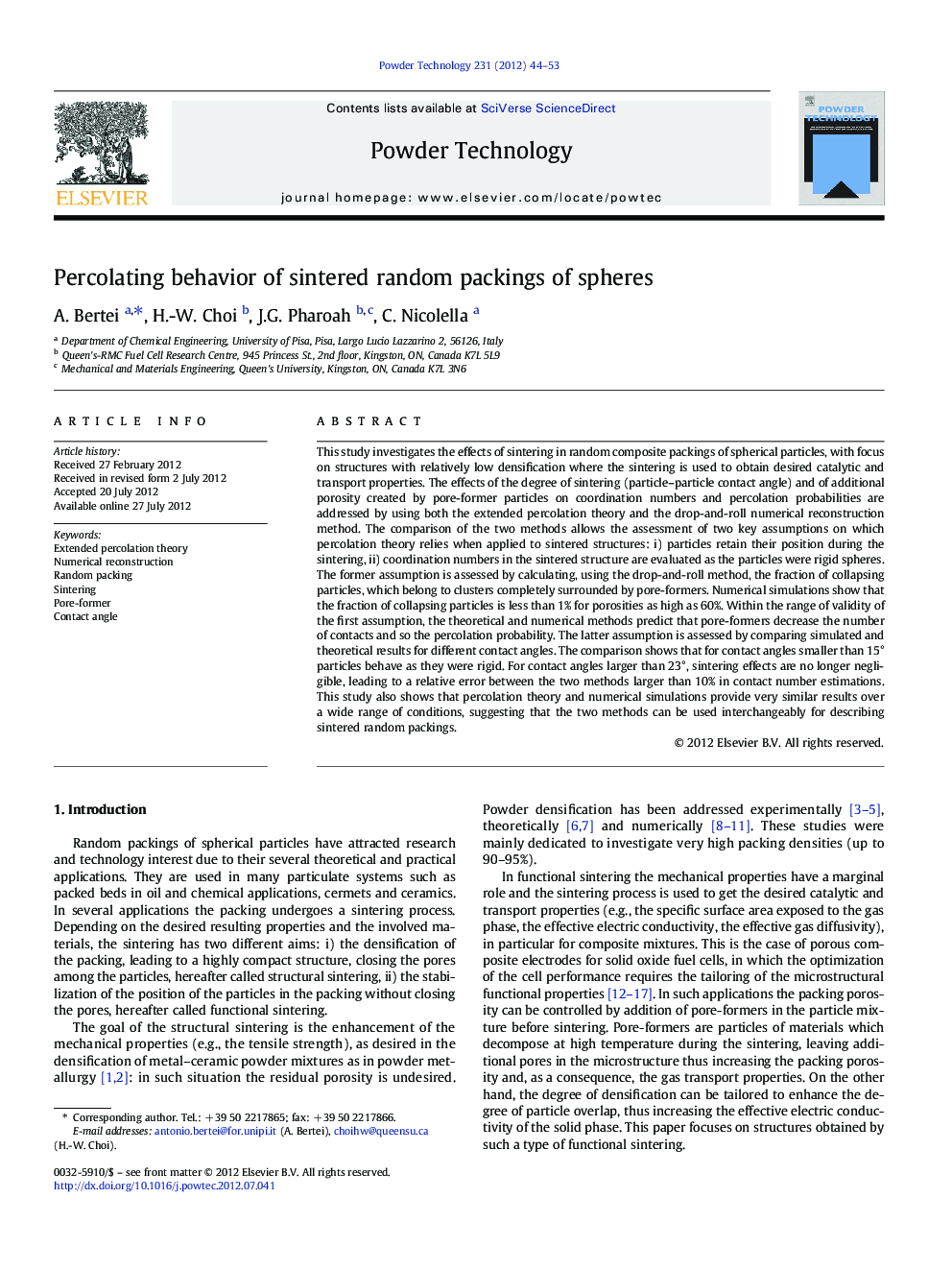| کد مقاله | کد نشریه | سال انتشار | مقاله انگلیسی | نسخه تمام متن |
|---|---|---|---|---|
| 236736 | 465684 | 2012 | 10 صفحه PDF | دانلود رایگان |

This study investigates the effects of sintering in random composite packings of spherical particles, with focus on structures with relatively low densification where the sintering is used to obtain desired catalytic and transport properties. The effects of the degree of sintering (particle–particle contact angle) and of additional porosity created by pore-former particles on coordination numbers and percolation probabilities are addressed by using both the extended percolation theory and the drop-and-roll numerical reconstruction method. The comparison of the two methods allows the assessment of two key assumptions on which percolation theory relies when applied to sintered structures: i) particles retain their position during the sintering, ii) coordination numbers in the sintered structure are evaluated as the particles were rigid spheres. The former assumption is assessed by calculating, using the drop-and-roll method, the fraction of collapsing particles, which belong to clusters completely surrounded by pore-formers. Numerical simulations show that the fraction of collapsing particles is less than 1% for porosities as high as 60%. Within the range of validity of the first assumption, the theoretical and numerical methods predict that pore-formers decrease the number of contacts and so the percolation probability. The latter assumption is assessed by comparing simulated and theoretical results for different contact angles. The comparison shows that for contact angles smaller than 15° particles behave as they were rigid. For contact angles larger than 23°, sintering effects are no longer negligible, leading to a relative error between the two methods larger than 10% in contact number estimations. This study also shows that percolation theory and numerical simulations provide very similar results over a wide range of conditions, suggesting that the two methods can be used interchangeably for describing sintered random packings.
The increase of porosity in random packings of spherical particles by means of the addition of pore-formers leads to the decrease of coordination numbers and percolation probability. On the other hand, the increase of the contact angle increases particle connectivity. These phenomena, related to sintering, are investigated by means of a drop-and-roll reconstruction method and the percolation theory.Figure optionsDownload as PowerPoint slideHighlights
► Accounting of pore-formers and particle–particle contact angle in sintered structures
► Extended percolation theory and drop-and-roll reconstruction method applied
► Pore-formers decrease the coordination numbers and the percolation probability
► Identified range of validity of both methods with respect to local structure collapse
► Limiting contact angle equal to 23° over which sintering effects should be considered
Journal: Powder Technology - Volume 231, November 2012, Pages 44–53